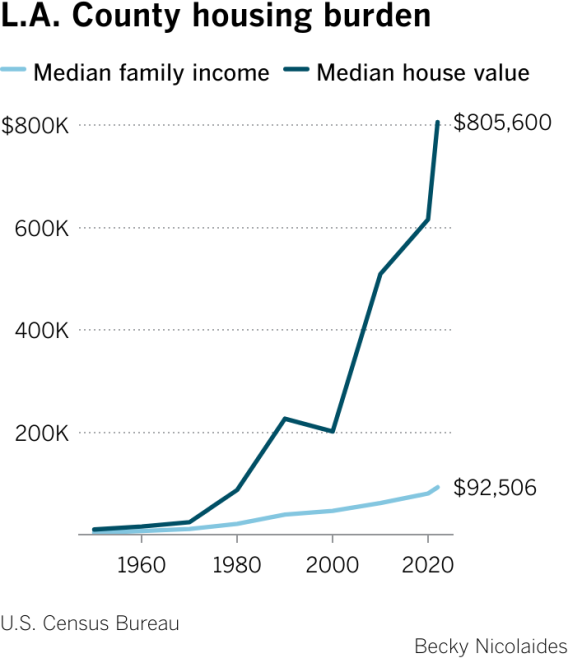As the rumor spreads that millions of women are lined up to be weighed at the Fulton County Jail, we head into late summer and early autumn, rarely a time for increased home sale activity. The National Association of REALTORS®’ total membership in July 2023 is 1.56 million. There are about 547k active listings. That’s one listing per three NAR members, which doesn’t even include non-NAR real estate agents. Analysts continue to point to the nationwide housing market struggling with low inventory levels and decreased affordability. While active inventory through the first six months of 2023 was higher than the record lows set in 2022, new listings have been lagging below 2022 levels. Just simply not enough homes? But Hawai’i’s Marcelle Loren writes, “I don’t agree with the reports of a lack of inventory. There’s just a lack of agents digging up properties to sell. For example, the death of Baby Boomers is a source of inventory: Rising costs are prompting more adult children to sell the homes they inherit from their parents. (Today’s podcast can be found here and this week’s is sponsored by Black Knight. Black Knight is an award-winning software, data and analytics company that drives innovation in the mortgage and real-estate industries, and the capital and secondary markets. Listen to an interview with the company’s Conrad Ficca and Richard Lombardi on climate risk and how lenders can mitigate its impact through data.)
Lender and Broker Software and Services
“How will this solution improve the homebuyer or homeowner experience?” This simple question guides the way we develop and deliver products at Black Knight, a mindset we call “Think Customer.” By combining this mentality with a Scaled Agile Framework (SAFe), Black Knight aligns product development and delivery with end-consumer needs while staying ahead of the latest market and technology advancements. Learn more about the value this approach has brought Black Knight clients and their customers in the blog post “’Think Customer’ in an Agile World”.
In this market, hustle is everything. You can’t afford to waste a single deal, or a single minute. That’s why ReadyPrice has launched Shop.Lock.Deliver.® It’s an innovative new platform designed to help independent mortgage brokers like you save time and money. Now you can shop competitive loan offerings from multiple lenders, get rate lock guarantees in real time, receive underwriting findings, and deliver the borrower’s complete loan file to lenders, and all on a single platform, at no cost to brokers. It’s the industry’s most powerful universal delivery portal, and it’s already helping brokers around the country thrive and compete in even the toughest market environments. Multiple lenders. One platform. Zero b.s. Check out ReadyPrice today.
Free report: These growing borrower segments present opportunities for new business in 2023’s market. Wondering how to fill your pipeline when loan volume is scarce? New data from Maxwell gives lenders an exclusive look into home buyer groups taking on higher rates head-on. Did you know, for instance, that the share of 18 to 24-year-old borrowers has increased by 18 percent year-over-year? Now is the time to cater to these rising home buyers. For exclusive data and actionable takeaways, click here to download Maxwell’s Q2 Mortgage Lending Report.
Credit Products for Brokers and Lenders
In today’s competitive landscape, every dollar and interaction matter more than ever. Blend’s first-of-its-kind soft credit pull delivers a simpler pre-qualification process, reducing top-of-funnel friction, cutting approximately $50 per credit file, and safeguarding borrowers from tri-merge solicitation and negative impacts on their credit scores. For lenders, Blend’s soft credit pre-qualification streamlines the application process, reducing drop-offs and increasing conversion rates. It provides lenders with valuable insights without an expensive hard credit inquiry, improving risk assessment and decision-making. Blend seamlessly integrates soft credit checks into the mobile loan officer experience and self-serve processes, with widespread adoption, ultimately leading to substantial cost savings for our customers. For borrowers, soft inquiries remove barriers to accessing early eligibility information, protect borrower credit scores, and promote financial empowerment, encouraging more borrowers to engage with lenders. Soft credit pre-qualification is a game-changer in the lending industry and a true win-win for borrowers and lenders.
Fraudulent employment data in mortgage loan applications cause risks for lenders and borrowers. For many years, it has been common practice for mortgage lenders or brokers to ask for paper pay stubs to help verify loan applicant’s income. But in 2022, out of all mortgage loans that had a fraud investigative finding, 43 percent were classified as income fraud. Technological advances allow lenders to instantly and securely obtain reliable income and employment verifications from a trusted third-party provider. Available for use by credentialed verifiers with a permissible purpose under the FCRA, The Work Number® database is the leading commercial repository of employer-contributed payroll data. Unlock the power of our expansive database, instant access to 161 million current employment records directly from 2.8 million employers and payroll providers. With buybacks on the rise, why use paper-based processes that potentially increase repurchase risk at a time when proven GSE-approved options exist?
The Big Getting Bigger
Guild Mortgage further expanded its market share with the announcement this morning of the company’s acquisition of First Centennial Mortgage, a privately held residential lender headquartered in Illinois. Founded by brothers Steven and David McCormick in 1995, First Centennial will bring 15 branches and nine satellite offices to Guild’s growing national retail network. This acquisition is Guild’s third this year, following its purchase of Cherry Creek in April and Legacy Mortgage in February. (Guild was represented by the STRATMOR Group’s M&A team.)
Lenders tired of the rate volatility, the cost cutting, rates possibly trending higher with the Fed fighting inflation (until the Silicon Valley bank failure drove them down) may be looking at selling their company or merging it. “Valuing a Lender” was recently posted on the STRATMOR website.
Sure enough, STRATMOR’s M&A practice is on fire as big lenders have become small lenders, or brokers, and culturally paired lenders are wondering, “Why have two accounting teams? Two capital markets groups? Two underwriting staffs?” And so on. (Anyone interested in learning more should talk to David Hrobon or Garth Graham.) Of course, as has been mentioned in this commentary, larger lenders are also adept at simply hiring production staff away from smaller, thinly capitalized lenders.
Many owners of lenders around the nation are earnestly interested in making a decision about what to do with their company before a decision is made for them. I have received this question from a number of owners of small lenders. ‘Rob, is it only the lenders who have servicing who have any value? Or can small lenders with decent market share like mine have interest from buyers?”
Garth Graham replied. “Great question, Rob, and one we field nearly every day. We are hearing from lenders who are inquiring about the M&A space, and often trying to find out what is going on and what they should do.
“The answer is that there continues to be good deals for potential sellers, and the reason is that there are a lot of buyers we work with who continue to want to grow market share in a down market. We closed three deals in the last 60 days, and all had upfront premiums with solid earn outs, with a good cultural fit for the parties. Often the premium being paid is driven by the ability for the seller to add the production without having to add all the corporate expense, so it can be painful decisions about the corporate depts (secondary, HR, Risk, technology etc.), but the end result is that the production is worth more to the buyer than it is to the seller due to the cost savings. And that shows up on premium offers. And the seller gets the balance sheet plus a share of that financial benefit. So, it can be a potential win-win. Of course, it has to be a deal that makes sense for the LOs, and production staff too, so that is why culture matters so much.” Thank you, Garth.
To wrap up, in valuing a company, a potential buyer will look at the audited net worth and the discounted cash flows, usually for the next three years of estimated earnings. (The devil’s in the details and assumptions!) The value to a potential buyer will depend on different factors, and three main variables often used in an analysis are loan volumes, margins, cost structure, & profitability, and the current policies, procedures, & business model.
Of course, repurchase obligations are included, as well as existing or potential liabilities. Are there outstanding lawsuits? Is the buyer buying the entire company, or a percentage of ownership… a minority ownership has very little value. It is not a simple process, and making assumptions about the future is problematic. A thorough examination of these factors is where the value of a competent advisor shows itself.
Capital Markets
Spoiler alert: our Federal Reserve doesn’t set mortgage rates, but the “hawkish” tone from Federal Reserve Chairman Jerome Powell was an indication that there won’t be much slack in the battle to bring down inflation. If they are any indication, futures trading is pricing in roughly a two-thirds probability that the central bank will boost its key interest rate by a quarter percentage point in November after a pause in September.
In an eagerly anticipated speech from Jackson Hole on Friday, Fed Chair Powell made no bones about the Fed’s unwavering pursuit of returning annualized inflation to 2 percent. As far as the Fed is concerned, the message is “stay the course” even if that means even higher interest rates. Powell reiterated that the Fed would not change its long-term inflation target of 2 percent as some market commentators may have hoped and reaffirmed the reliance on incoming economic data and the potential to further tighten monetary policy if the conditions warrant. His wholly expected remarks seem to have had a calming effect on markets. Other central bank chiefs echoed Powell in projecting a cautious stance, saying the inflation triggered by Covid-19 and its fallout has not been fully conquered.
While recent data has been trending in the Fed’s desired direction, Powell noted that the previous two months of data are not enough to instill confidence that inflation will continue to trend down towards the Fed’s goal. There are still supply and demand imbalances that put upwards pressure on inflation specifically as it pertains to shelter and non-housing services. Overall, goods prices have declined and residential lease rates are cooling, however home prices remain high due to lack of supply. Given the desire not to repeat the mistakes of the 1970s in declaring victory over inflation too soon, it is not surprising the tone of the Fed continues to be one of caution, which may continue even as more positive data is released.
The Federal Reserve is data-dependent, of course, and this week is packed with potential market moving events including front-loaded month-end supply, and economic data including several labor market indicators, culminating with monthly U.S. employment numbers that will be released on Friday, and Fed-favorite PCE on Thursday, which also happens to be month-end. Other economic data of interest include housing-related releases, consumer confidence, GDP, Chicago PMI, ISM, and construction spending. The start of the week is all about supply with the Treasury auctioning $45 billion 2-year notes and $46 billion 5-year notes. Today also brings Dallas Fed Texas manufacturing for August and comments from Fed Vice Chair for Supervision Barr. We begin the week with Agency MBS prices roughly unchanged from Friday’s close and the 10-year yielding 4.23 after closing Friday at 4.24 percent. The 2-year is at 5.10 after Fed Chair Powell’s Friday comments drove the yield higher.
Employment
“A seasoned executive is looking to explore the next growth and strategic opportunity. Over the course of a twenty-three-year career, I developed expertise in many aspects of the business, spanning retail, wholesale, and correspondent production. Background also includes a deep understanding of MSR and servicing operations. Proven ability to manage businesses at scale, with a strong focus on compliance, credit, and enterprise risk management. Passionate about process optimization and leveraging technology to drive efficiency, all while fostering a positive organizational culture. Track record includes driving maximized revenue through aggressive yet responsible growth strategies. Working for private equity-owned organizations, providing valuable experience in capital acquisition and broad investor relations. If you’re interested in learning more about my background and how I can contribute to your team’s success, please don’t hesitate to contact Anjelica Nixt to forward your note.”
The Maryland regional office of USA Mortgage has added leading Home Loan Officer Jamison Mullen to its team. Mullen, a 20-year industry veteran, joins a USA office headed by Bill Sohan who recently came on board as a regional vice president. “I wasn’t looking for a change. I was with a great company. But sometimes an opportunity arises that you can’t ignore,” said Mullen. “When Bill and Sam Rosenblatt approached me about joining forces, I had to listen. And as soon as I met the corporate leadership team at USA Mortgage, I knew they were the kind of people I wanted to work with for the remainder of my career.” Founded in St. Louis in 2001, 100 percent employee-owned USA Mortgage has offices in 34 states and is licensed in 49 states plus the District of Columbia. For a confidential conversation about joining USA, contact Bill Sohan at 410-963-2308.
Quality. Stability. Virtue. Traits that define a successful mortgage company, or any company, for that matter. But when we’re talking about mortgages, InterLinc Mortgage hits the mark on these three skills, and more. With an average of $32 million in annual production per Loan Originator, the mortgage team not only kept pace through a turbulent market, but they did also so with excellence. Scotsman Guide’s 2022 Top Overall Lender and Top Retail Lender awards prove the grit and sustainability displayed by the producers (which is an assembly of the elite) and its leaders. A company that proves fortitude and character…worth the look.
Download our mobile app to get alerts for Rob Chrisman’s Commentary.


